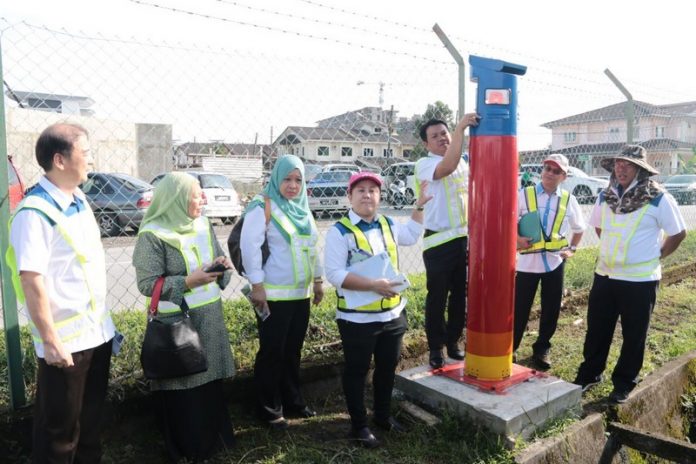For the past few decades, the Department of Irrigation and Drainage (DID) Malaysia has been utilising technology in its flood management, which is part of one of its functions of developing plans and management of flood mitigation programmes.
An example of such effort is Infobanjir, a centralised database that was developed in 1999 and used in 2000 to collect real-time rainfall and water level information for monitoring purposes within the department only.

It has since become a web-based system named Public Infobanjir, featuring various information related to floods in Malaysia – e.g. flood warning, flood forecast, rainfall and water level – that are “displayed more interactively” and “easier to understand”. More importantly, it is accessible to the general public, academic institutions and disaster-related agencies.

In 2014, following the devastating floods that impacted large parts of Kelantan, Terengganu and Pahang, the Malaysian Government initiated the first phase of the National Flood Forecasting and Warning Centre (PRABN), which was incorporated into Public Infobanjir.
With the goal of providing “accurate and reliable forecast and warning of impending floods for public safety and the reduction of risks and property damage,” the centre is able to send flood warnings via sirens to flood disaster-related agencies and those living in potentially affected areas as early as two days before flooding takes place.
It also performs flood predictions in the form of seven-day flood forecasts, as well as generates the latest flood report within 24 hours after a flood occurs.
The first phase of PRABN saw monitoring stations set up along the Sungai Kelantan Basin, Sungai Terengganu and Sungai Pahang.

The second phase, which is expected to be completed in 2023, will be divided into the northern zone of Peninsular Malaysia – Perlis, Kedah, Penang and Perak – and the central and southern zones – Selangor, Kuala Lumpur, Negeri Sembilan, Melaka and Johor.
This phase will also involve implementing major improvements to the centre, including enhancing closed-circuit television cameras (CCTVs) communications system at its monitoring stations and the content of the flood warning short messaging system (SMS).
Technological Innovation in Sarawak’s Flood Warning System
Floods, unfortunately, are annual affairs in Malaysia. In Sarawak, they usually occur during the north-east monsoon between November and March. The State is also susceptible to flash floods, especially in low-lying urban areas; at times, just a few hours of heavy rainfall can lead to a sudden surge in water level.
Through its agencies, the Sarawak Government undertakes various measures involving technology to detect and monitor floods as well as send flood warnings to those who may be affected by potential disasters.
Sarawak Rivers Board, for instance, has established a telemetry system comprising over 20 telemetry stations located at river catchments particularly in the Sungai Sarawak Basin that feed real-time data and provide early flood warnings to Sungai Sarawak Barrage when the river water hits a dangerous level.
Like its federal entity, DID Sarawak has also made use of technology to enhance its capability to mitigate floods in the State. Among them are:
Intelligent Gauge
Intelligent Gauge (IG) is the result of an innovative project by DID Sarawak’s Kumpulan Inovatif dan Kreatif (KIK) DID Kenyalang, which earned a four-star rating and won the Sarawak Chief Minister Innovation Award during the State-level KIK Convention in October 2017.

Four of these devices have been installed at flood prone areas in Kuching City so far. They provide real-time water level data for flood monitoring and send early flood warning via siren and strobe light to residents living nearby.
Additionally, data from IGs are delivered to officers of DID Sarawak under the DID Disaster Task Force team via short message service (SMS), who will then relay them to the Sarawak Disaster Management Committee.

iHydro
Data from the four Intelligent Gauges are also displayed in iHydro, an online telemetry web-based system that was developed to assist relevant authorities and the public for flood monitoring and early flood preparation planning.

It shows information such as rainfall data and water levels of rivers in Sarawak in real time and is updated every 15 minutes.
At the time of writing, iHydro is able to display data from 250 rainfall telemetry stations and 109 water level telemetry stations throughout the State.





